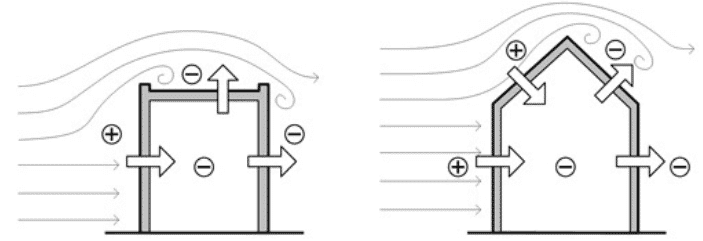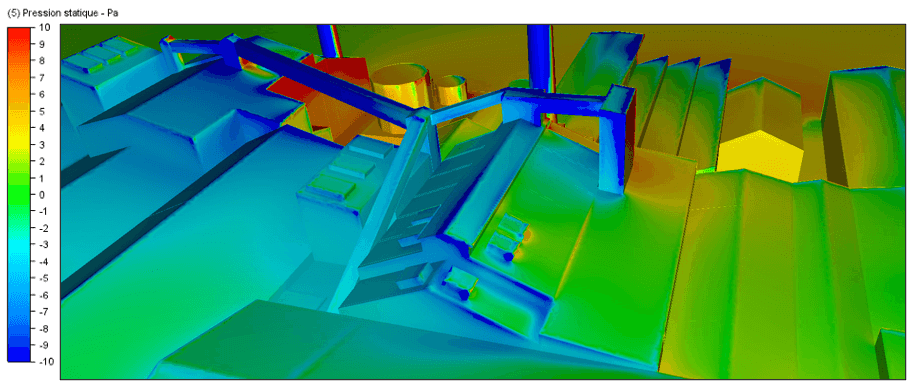Pressure study
Accueil » Air & Wind » Pressure study
EOLIOS, unique know-how in Europe
- A passionate team
- Exclusive estates
- All sectors
- Data Center
- A passionate team
- Compressor required
Continue navigation :
Our latest news :
Our projects :
Our areas of expertise :
Pressure study - General
The notions of overpressure and underpressure are relative and depend on the observer’s point of view. By convention, we consider here that we observe the building from the outside. Unless otherwise stated, overpressure means that the pressure outside the building is higher than inside.
The wind corresponds to a balancing current between zones of different pressures. The part of the air flow that encounters a building will be dammed up in front of it, creating a state of overpressure.
The value of this overpressure is called “stagnation pressure” and is expressed in pascal. The level of pressures and their distribution over a building are the result of the interaction between the incident wind (average velocity gradient, turbulence, etc.), the building (through the interplay of its shape, dimensions, wall roughness) and the juxtaposition of immediate obstacles (or the nature of the immediate environment).
These pressure differences cause air movements through the openings of the building. This phenomenon causes air infiltration on the windward side, and air extraction from depressed areas.
The aim of sizing natural ventilation is to provide the best possible support for air flows generated naturally by prevailing winds:
- Calorie evacuation
- Smoke evacuation
In this context, the aim is to position air inlets and extractions according to pressure distributions; to do this, the aim is to find zones with the same behavior(low or high pressure) according to prevailing winds. This helps to promote the intended operation of the opening.
Distribution of surface pressures
When a roof is exposed to the wind, pressure builds up on the windward side and negative pressure on the leeward side.
By its very nature, a difference in air pressure between two environments tends to balance out: the negative pressure on the opposite external face will cause air to be drawn in from the atmosphere inside the building. This creates an overpressure in the volume, proportional to the force of the wind, causing the interior air to circulate naturally.
Areas of overpressure will then tend to favor air ingress.
Examples of CFD simulation applications

CFD simulation of the aerodynamic phenomena of a peloton of cyclists

CFD simulation of drag: advanced calculation to improve aerodynamics
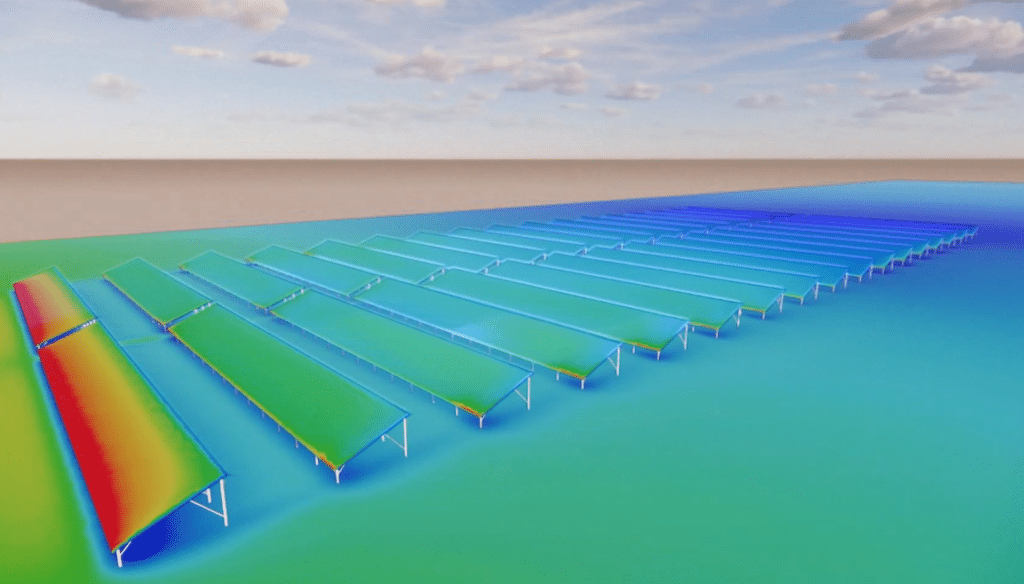
Impact of wind on a solar power plant
Pressure loss and hydraulic resistance
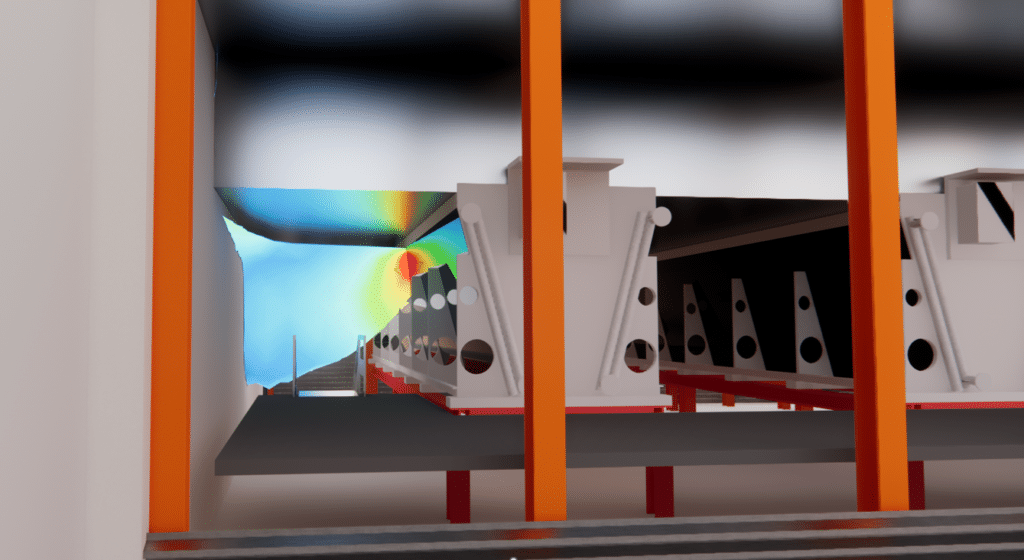
Legionnaires’ disease and cooling towers
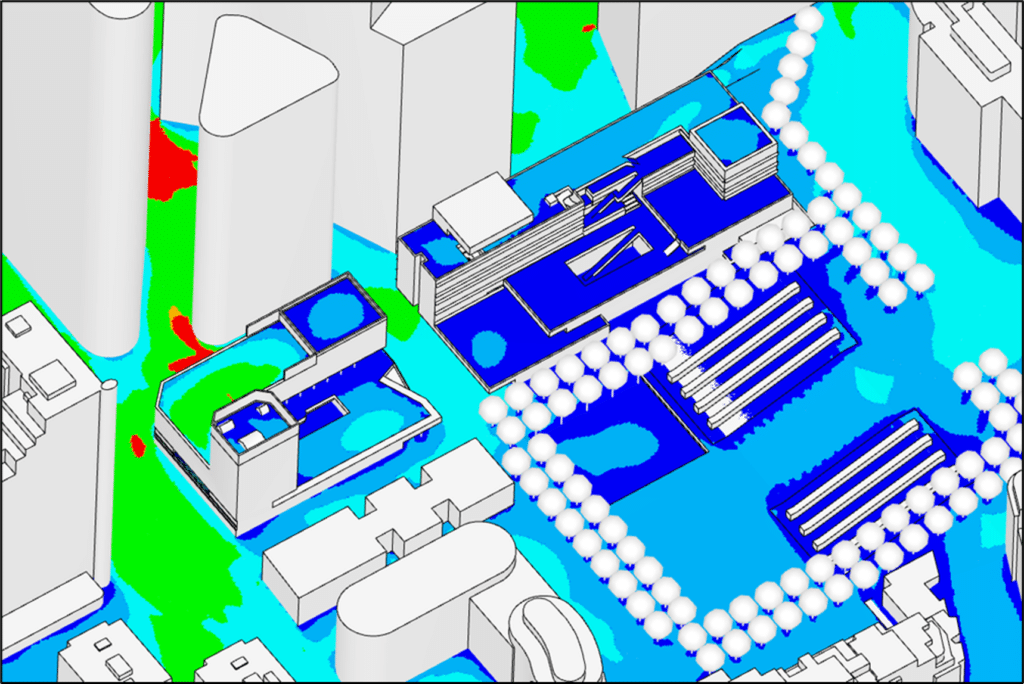
Pedestrian comfort criteria and mapping
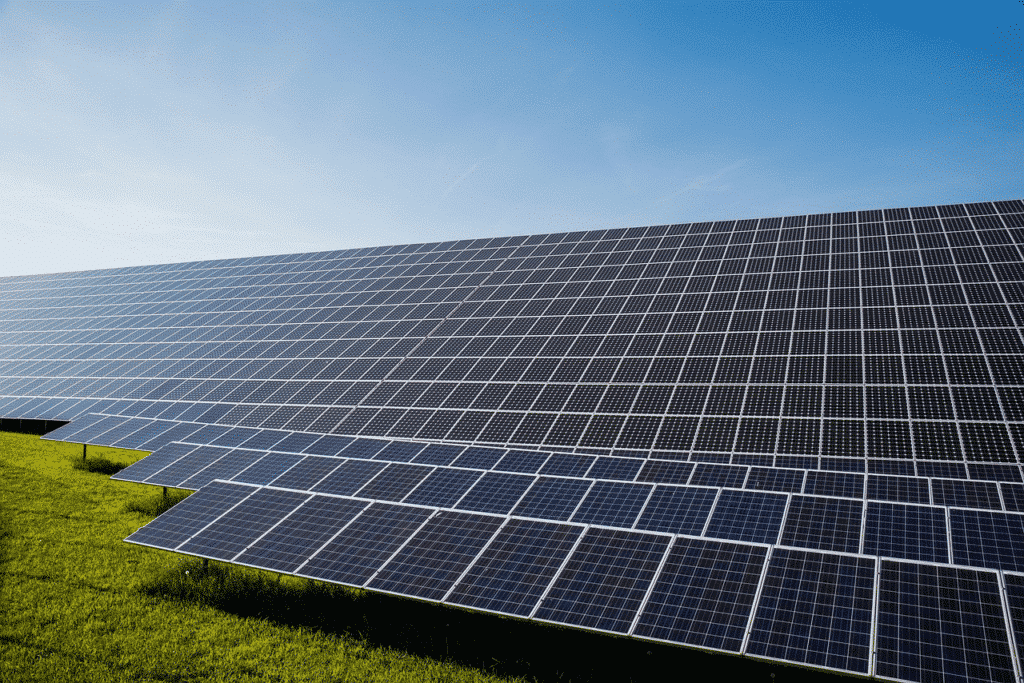
Extreme wind study – Solar power plant

Thermal draft effect
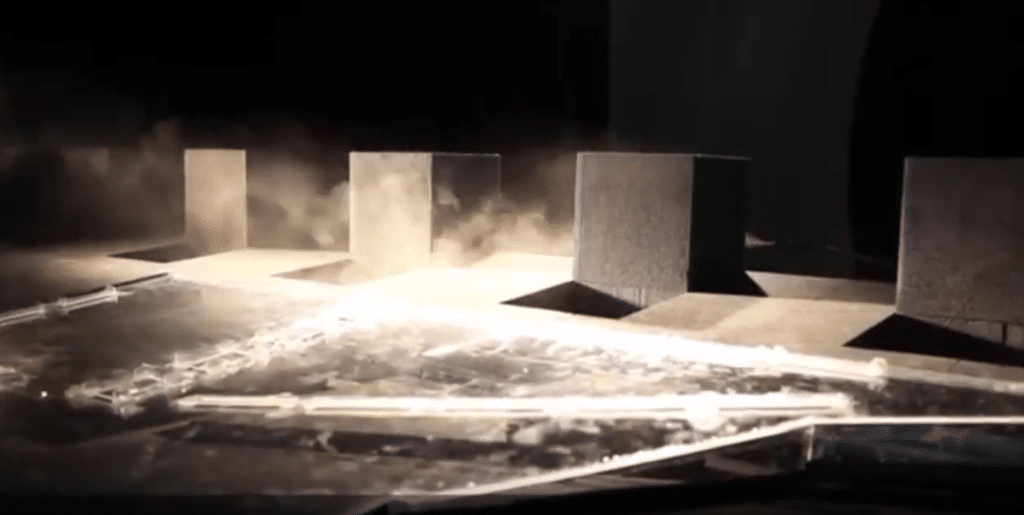
CFD simulation: An alternative to wind tunnel testing


